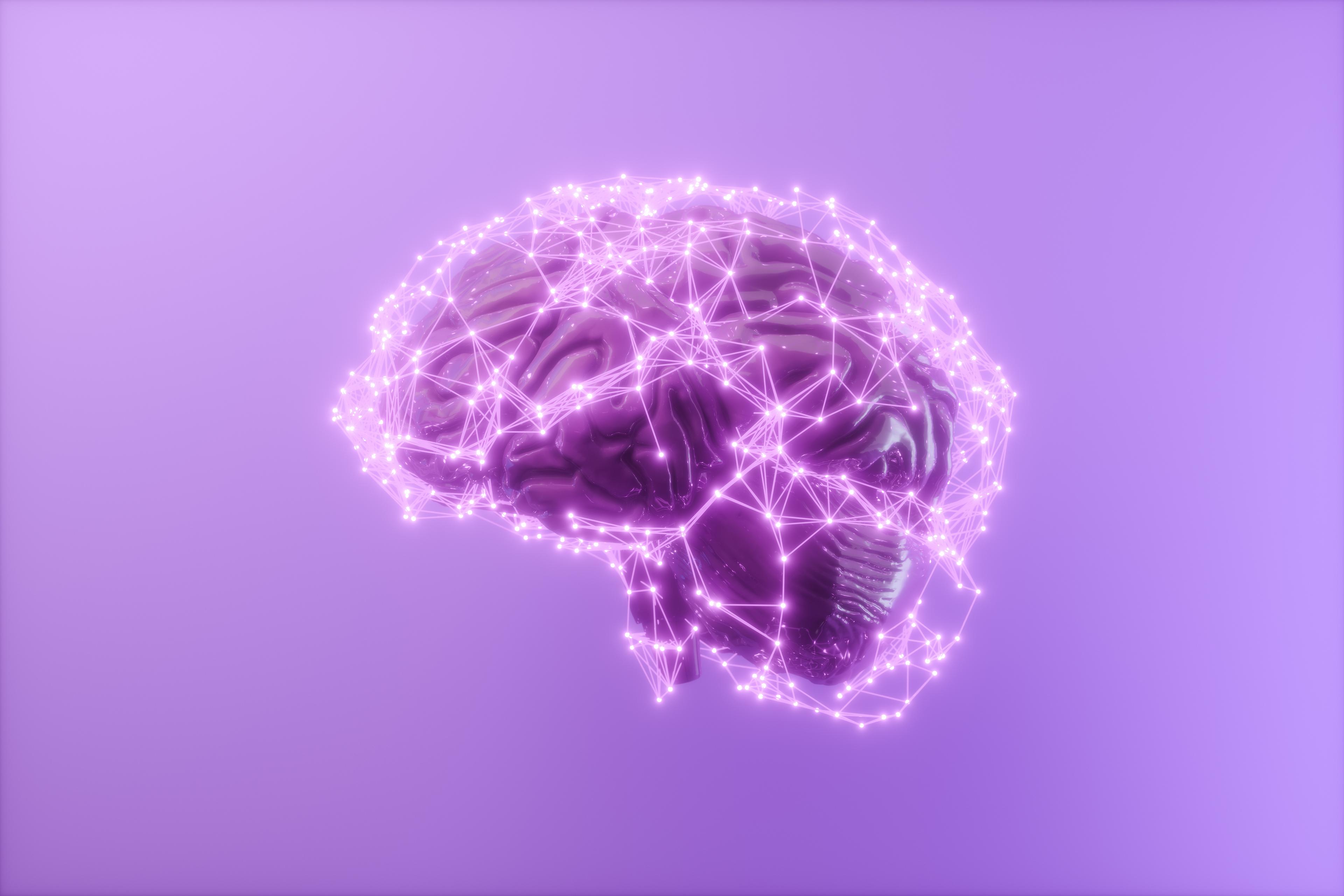
Recognizing the characteristics of eating disorders vs. disordered eating isn’t always simple.
Remember those spot-the-difference games in kids’ magazines? Two identical-seeming images appear next to one another, and you’re tasked with finding the ways in which they differ. At first glance, the differences seem nonexistent. But after a while, once your eyes have become familiarized to the shapes and colors, you begin to see: the ball in the left picture has blue and white stripes, not polka dots; the little girl on the right has her eyes closed, not open; on the left, a cloud hides part of the sun.
Trying to tease out the differences between eating disorders and disordered eating can feel like a similar process.
Alike though they may be, eating disorders and disordered eating are distinct from one another—though both are a cause for concern. We dove into the research and talked to experts to help you tell the difference.
First, what is non-disordered eating?
Before we can begin to understand disordered eating and eating disorders, it’s helpful to have a baseline for comparison. As a caveat, every person’s eating behavior is unique to them, and there is no universal definition of “normal” eating. But many of the definitions of non-disordered eating emphasize the idea of eating to meet your body’s needs and not spending a disproportionate amount of time thinking, obsessing, or stressing about food. “Normal” eating habits look different from person to person, but they tend to be flexible and oriented toward hunger cues, pleasure, and social circumstances.
So what is disordered eating?
Disordered eating is a term used to describe a wide range of harmful eating behaviors that may not warrant an eating disorder diagnosis. “Disordered eating is more of a descriptive term, and not an official psychiatric diagnosis described in the DSM-5,” says Katherine Hill, MD, VP of Medical Affairs at Equip.
According to Hill and Rui Tannimura, RD, a registered dietitian with Equip, some of the most common signs of disordered eating include:
- A rigid approach to eating (tracking calories or macronutrients, inflexible meal times, reduced food variety)
- Assigning moral value to food (judging good foods vs bad foods)
- Skipping meals or frequent dieting
- Anxiety around trying new foods or eating in different environments
- Exercising to compensate for what has been eaten
- Secretly eating
- Increased preoccupation with food and body and fear of weight gain
- Poor emotional regulation
Causes of disordered eating
There are many different factors that might lead someone to develop disordered eating. Fad dieting is a major one. Diets that encourage intermittent fasting, cutting out entire food groups, or ‘cleansing’ the body through juices are all inherently forms of disordered eating in themselves.
Other causes of disordered eating may include societal or interpersonal pressure to lose weight, certain personality traits like perfectionism, and psychological factors such as depression, anxiety, or low self-esteem.
Because disordered eating habits are so normalized, it can be hard to spot them. But it’s important that you’re aware of disordered eating. Not only can these behaviors cause harm, but disordered eating can also quickly escalate into an eating disorder, especially for people who are already susceptible.
What is an eating disorder?
As opposed to disordered eating, eating disorders are mental illnesses with specific, narrow diagnostic criteria. There are 5 most common types of eating disorders, all with slightly different symptoms:
- Anorexia Nervosa: Anorexia is characterized by extreme food restriction and an intense fear of gaining weight leading to a significant low body weight in the context of age, sex developmental trajectory and physical health.
- BED (Binge eating disorder): BED is characterized by recurrent episodes of uncontrollably eating a large amount of food quickly with a sense of lack of control while eating, often accompanied by a feeling of guilt and shame. It’s the most common eating disorder in the US.
- Bulimia Nervosa: Bulimia is an eating disorder characterized by recurrent episodes of binge eating (eats objectively large amounts of food) and then recurrent episodes of purging to prevent weight gain, which may look like self induced vomiting, misuse of laxatives, diuretics, or excessive exercise.
- ARFID (Avoidant Restrictive Food Intake Disorder): ARFID is an eating disorder characterized by an eating disturbance in which there is failure to meet nutritional or energy needs leading to significant weight loss, nutritional deficiencies, the need for nutritional supplements or a marked interference with psychosocial functioning. This eating disorder can present due to sensory sensitivities, fears around eating, or a lack of interest in food.
- OSFED (Other Specified Feeding and Eating Disorder): OSFED is a more general term to describe eating disorders that don’t fit into other diagnoses. Some sub-categories of OSFED include atypical anorexia (meets all of the criteria of anorexia nervosa except for significant low body weight), purging disorder and night eating syndrome.

Eating disorders and disordered eating both share many common behaviors, such as restricting food intake or ‘working off’ meals. This makes differentiating one from the other becomes that much more difficult—but it’s possible.
How to tell the difference between eating disorders and disordered eating
The difference between eating disorders and disordered eating lies less in specific behaviors and more in degree. “There’s a fine line between disordered eating and an eating disorder,” Hill says. “Disordered eating is generally mild without a significant impact on someone’s mental or physical health or self-worth.”
Determining whether these disordered behaviors are emerging out of an eating disorder requires looking holistically at the person and taking into account the ways these behaviors impact their life, including medical complications. Tanimura explains that the primary difference between eating disorders and disordered eating lies in these three qualities:
- Severity: How intense the behaviors are and how much they disrupt regular life
- Frequency: How often these behaviors are repeated day to day
- Length of time: How long the behaviors have been going on for
Here are some more factors to consider when evaluating if it might be an eating disorder.
Physical & mental health complications
If disordered eating begins to have a negative impact on health, it’s probably tipped over into eating disorder territory. “Disordered eating is generally not significantly impacting someone’s physical or mental health, whereas an eating disorder does,” says Hill. “So generally, people with disordered eating aren’t struggling with common medical or psychiatric complications of an eating disorder, like mood changes, menstrual irregularities, GI symptoms, bone density, or changes to heart function.”
Other health complications of an eating disorder include low heart rate, loss of tooth enamel, and hair loss, as well as depression, anxiety, and suicidal thoughts.
Ability to function normally
While people with disordered eating habits may be preoccupied by thoughts around food and their body, their life generally isn’t greatly impacted. With an eating disorder, however, those thoughts and behaviors occur so frequently, and are so intense, that the eating disorder reshapes life.
According to NEDA, when someone’s disordered eating habits become so severe that they take away from normal functioning, it is a strong indication of an eating disorder. For example, a child who skips her best friend’s birthday party out of anxiety around the cake, or a teen who lies to his parents and goes out on a 5-mile run despite having a bad cold.
Mental toll
What’s happening inside someone’s mind matters, too. While those with disordered eating habits may think about food more than others, the level of obsession is far more intense with an eating disorder. Those struggling with an ED are often so fixated on food — what they did eat, what they didn’t eat, what they will eat, how they’ll avoid eating — that it impairs focus and makes it nearly impossible to stay present.
One helpful way to think about it is to ask how often someone thinks about food or their body, and how often they want to think about food or their body. If the gulf between those two answers is significant, it shows that their brain is being monopolized by thoughts over which they don’t have control. This is a major red flag for an eating disorder.
The number of behaviors
Eating disorders are a cluster of symptoms. Adopting one disordered eating habit—unhealthy and damaging though it may be—is not an eating disorder. So if you observe disordered habits, take a step back and begin to notice what else there might be. Are you or a loved one simply skipping breakfast all of a sudden? Is it a combination of skipping breakfast and exercising before breakfast and becoming socially withdrawn? If you recognize a lot of concerning behaviors emerge, it could be the beginning of an eating disorder.
The dangers of disordered eating
Even if disordered eating habits aren’t the precursor to a full-fledged eating disorder, they can still be dangerous. Disordered eating can still have an impact, leading to several mental and physical health issues such as:
- Anxiety and depression
- Digestive problems
- Fatigue
- Poor sleep
- Nutritional deficiencies
One worrisome twist to all of this is that disordered eating behaviors have become increasingly normalized and even praised in our society – making them easy to dismiss. As the thin ideal still prevails and diet mentality permeates our culture, our conversations, and our conscience, habits like skipping meals or exercising for hours each day are socially accepted. This not only means that harmful behaviors may go unnoticed, but may also encourage disordered eating behaviors in those susceptible to them.
This matters, because while someone might “just” be engaging in disordered eating behaviors for the time being, this could be the first step on the path toward an eating disorder. “In my experience, I’ve seen disordered eating often be the trigger for a diagnosable eating disorder,” says Tanimura.
How to help someone struggling with disordered eating
If you’re worried that you or someone in your life is engaging in disordered eating behaviors, it’s important to ask your primary care provider for a medical assessment. This advice holds true even if you fully understand the characteristics of eating disorders vs. disordered eating and have determined that the behavior in question falls into the latter category.
Tanimura emphasizes that it’s vital not to delay seeking help: “Early intervention is key to preventing further damage,” she says. “There are eating disorder assessments online that could be the first step. Seeking support as soon as possible is strongly encouraged.”
If you're concerned about someone you love, you might be surprised to find out that the “mild” disordered behavior they observed was just the tip of the iceberg. “People are often very skilled at hiding their eating disorder, and it might initially appear more mild than it actually is,” says Hill. “Family and friends are often shocked to learn not only that their loved one has an eating disorder, but that the eating disorder has been going on for a while without anybody knowing.”

- Pereira, R. et al. Disordered Eating: Identifying, Treating, Preventing, and Differentiating It From Eating Disorders. Diabetes Spectr 1 July 2007; 20 (3): 141–148.
- Pennesi, J. et al. A systematic review of the existing models of disordered eating: Do they inform the development of effective interventions? Clinical Psychology Review, Volume 43, 2016, Pages 175-192, ISSN 0272-7358.
- Puccio, F., et al. (2017) Longitudinal Bi-directional Effects of Disordered Eating, Depression and Anxiety. Eur. Eat. Disorders Rev., 25: 351– 358.








